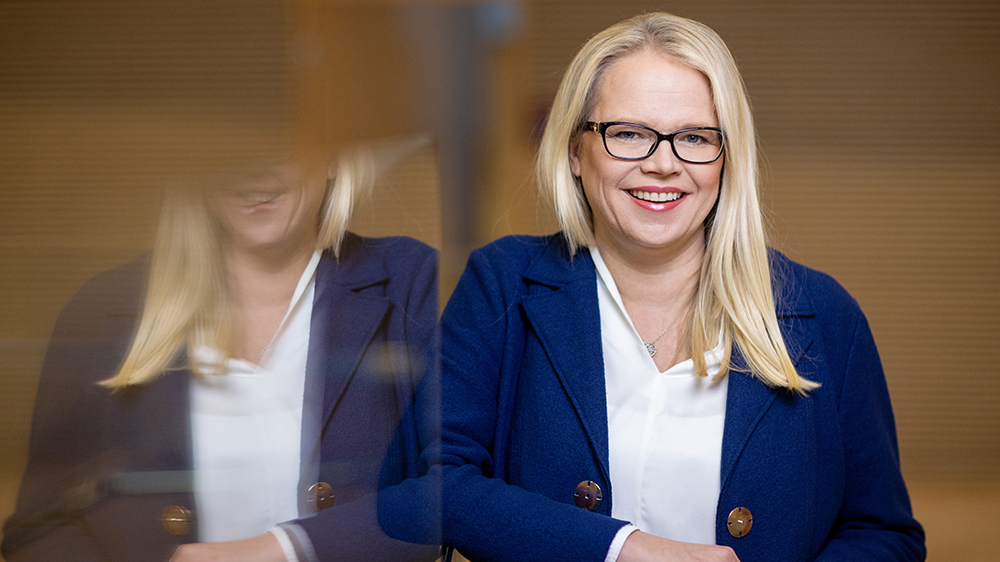Until about five years ago, UPM had traditional discussions held at least once a year: The manager set an annual target for their team member, and a year later they reviewed whether the target had been achieved.
"We noticed that the world changes a lot in a year, and the management model can't keep up. Even though people acted in an agile manner, the way of working maintained rigidity," says Kaisa Ventelä-Nilsson, HR Development Director at UPM.
The old management model, which focused on managing performance, was scrapped. The new management model supports today's trends in working life, such as agility, self-direction, feedback culture and continuous development.
"Leadership is about enabling performance and nurturing the motivation to work. From managers, it requires empathy and interest in people, but also the ability to consider diversity and inspire different individuals on the team in different ways," Ventelä-Nilsson says.
In the development of the management model, studies on people-centered management were utilized, highlighting building on the employee's strengths. Lessons were sought from modern knowledge work companies, such as Google and Microsoft.

Kaisa Ventelä-Nilsson
Three cornerstones
In 2017–2018, the model was introduced gradually across the organization. It was built on three cornerstones: regular discussions between the manager and the team member, forward-looking individual goals which can be changed quickly, if necessary, and a strong feedback culture that enables developing together.
"The goal is for the manager and the team member to discuss the goals on a monthly or even weekly basis, if necessary. The role of the manager is to coach, and at best, the agenda is set by the team member," says Marju Luoma, HR Director of UPM's Fibres business area.
In the maintenance and repair operations (MRO) procurement team at the Kaukas pulp mill, the more frequent discussions have been well received. Goals and the progress are discussed frequently.
"The whole team has also taken it upon itself to give and ask for feedback. Team members share openly the received feedback with each other. Personally, I highly appreciate the open and trusted atmosphere. I like the fact that personal goals are agile and can be changed as needed," says Milja Lindvist, Senior Manager, MRO Procurement at the Kaukas pulp mill.
UPM's Plywood business has recently focused on strengthening the feedback culture. The development program consists of several activities, of which the "12 months – 12 challenges" call-for-action is currently running: all employees are challenged to improve their feedback skills and build the culture through action. As employees’ feedback skills develop, they will be better able to work and develop together and achieve business goals in the complex business environment.
The new model of performance management has been put to a real test during the pandemic, as many have had to work remotely. UPM has encouraged everyone to come to the workplace if possible, so that the common culture can be maintained, and people can develop and brainstorm together.

Marju Luoma
Better dialogue
The performance management model is based on the objectives set together for the work and the evaluation of performance. The objectives are personal and, therefore, diverse. They can relate to hard metrics, such as financial results, or for example, personal development.
The transition to the new model has been a huge cultural change at UPM, as the previous model was in use for a long time. After the introduction of the model, the follow-up study showed positive results in people's motivation and commitment to work and in targeting rewards for excellent performance.
"The work continues. Changing organizational DNA won't happen overnight. For example, it will certainly take some time to develop a feedback culture. We can already see that more feedback is being asked, received, and given, and its quality has also improved. The dialogue between team members and managers has also improved, and the goals are clearer," says Luoma.
